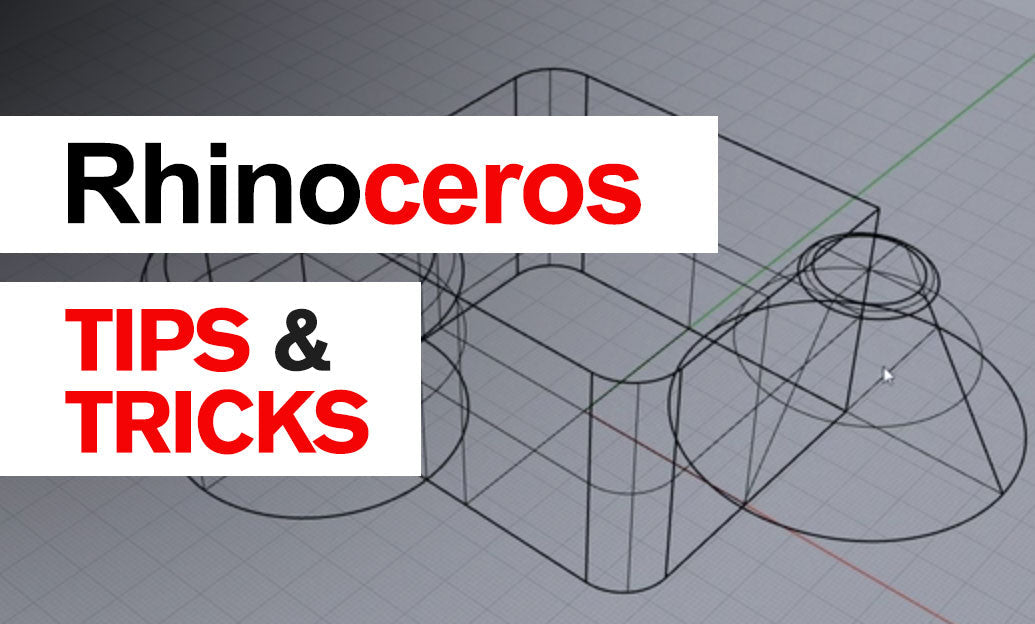Your Cart is Empty
Customer Testimonials
-
"Great customer service. The folks at Novedge were super helpful in navigating a somewhat complicated order including software upgrades and serial numbers in various stages of inactivity. They were friendly and helpful throughout the process.."
Ruben Ruckmark
"Quick & very helpful. We have been using Novedge for years and are very happy with their quick service when we need to make a purchase and excellent support resolving any issues."
Will Woodson
"Scott is the best. He reminds me about subscriptions dates, guides me in the correct direction for updates. He always responds promptly to me. He is literally the reason I continue to work with Novedge and will do so in the future."
Edward Mchugh
"Calvin Lok is “the man”. After my purchase of Sketchup 2021, he called me and provided step-by-step instructions to ease me through difficulties I was having with the setup of my new software."
Mike Borzage
Rhino 3D Tip: Effective Tips for Mastering Parametric Design with Grasshopper in Rhino 3D
April 24, 2025 2 min read

Grasshopper is an essential tool for parametric design within Rhino 3D, enabling designers to create complex and adaptive models through a visual programming approach. By utilizing Grasshopper, you can automate workflows, explore generative designs, and manipulate data in ways that are challenging with traditional modeling techniques.
To effectively use Grasshopper for parametric design, consider the following tips:
-
Get Familiar with the Interface:
- The Canvas: This is your workspace where you assemble components to create definitions.
- The Components Library: On the left, you'll find a categorized list of all available components.
- The Parameters: Inputs and outputs that handle data types like numbers, geometry, and more.
-
Understand Data Flow:
- Wires: Connect components using wires to establish relationships.
- Data Matching: Be mindful of how data lists align when connected to inputs; this affects the outcome of your operations.
-
Utilize Parameters for Flexibility:
- Use Sliders: Control numerical inputs dynamically to adjust your model on the fly.
- Incorporate Data Input Components: Such as number inputs, boolean toggles, and panels for text and number input.
-
Learn Basic Components and Operations:
- Math Operations: Perform calculations to manipulate parameters.
- Sets and Lists: Manage lists of data for more complex operations.
- Vectors: Understand vector mathematics for transformations and orientations.
-
Work with Geometry:
- Create basic geometries using points, lines, curves, and surfaces components.
- Transform geometry through move, rotate, scale, and loft operations.
-
Master Data Trees:
- Learn how data is structured in trees, which is crucial for handling complex, branched data.
- Use components like Flatten, Graft, and Simplify to manage data trees.
-
Explore Advanced Plugins:
- Kangaroo Physics: Integrate physics simulations into your designs.
- Galapagos: Utilize evolutionary algorithms for optimization tasks.
- Weaverbird: Enhance mesh subdivision and transformation capabilities.
- Access these and more through NOVEDGE's extensive plugin library.
-
Debugging and Optimization:
- Use the Profiler to identify components that slow down your definition.
- Organize your canvas using groups and notes for better readability.
-
Practice with Examples:
- Study example definitions to understand how components interact.
- Participate in online forums such as the Grasshopper community for support and inspiration.
-
Integrate with Rhino:
- Baking Geometry: Transfer your parametric models to Rhino for further editing by baking.
- Synchronize changes between Rhino and Grasshopper for a seamless workflow.
-
Educational Resources:
- Consider tutorials and courses offered by NOVEDGE to deepen your understanding.
- Keep up-to-date with the latest developments and updates for both Rhino and Grasshopper.
By embracing Grasshopper for parametric design, you unlock the potential to create complex, responsive models that can adapt to changes quickly. This approach not only enhances creativity but also improves efficiency by automating tedious tasks.
For professional software solutions, plugins, and learning resources, visit NOVEDGE, your trusted partner in architectural and design software.
You can find all the Rhino products on the NOVEDGE web site at this page.
Also in Design News

Cinema 4D Tip: Cinema 4D Constraint Tag — Precise LookAt and Aim Setups
November 03, 2025 2 min read
Read More
ZBrush Tip: Edge Sharpening Workflow with Pinch and CurvePinch
November 03, 2025 2 min read
Read More
Revit Tip: Work Plane Best Practices for Hosting Non‑Level Geometry
November 03, 2025 2 min read
Read MoreSubscribe
Sign up to get the latest on sales, new releases and more …


